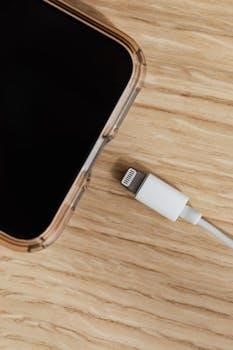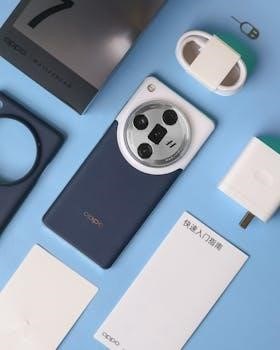onn charger instructions

Understanding Onn Charger Basics
Onn chargers are designed to power a variety of devices, including headphones and earbuds. These chargers often utilize micro USB or USB-C connections. Understanding the basic features is crucial for proper use, ensuring your devices are charged effectively and safely.
Identifying Your Onn Charger Model
To effectively use your Onn charger, it’s crucial to identify its specific model. This is often done by checking the label or markings printed directly on the charger itself. Look for model numbers that typically include a combination of letters and numbers, such as ONN5530 or AABLK100043845, which are associated with specific devices like headphones and earbuds. These identifiers are important to ensure you have the correct charger for your device. Sometimes, this information can also be found in the user manual or packaging that came with your Onn product. Knowing your charger model helps determine compatibility with various devices and the appropriate charging parameters. It can also be helpful when searching for replacement chargers or troubleshooting issues. Note that some Onn chargers come with different connection types, such as micro USB or USB-C, which further helps in identification. Always refer to the model number for accuracy.
Checking Compatibility with Devices
Ensuring your Onn charger is compatible with your device is paramount for safe and efficient charging. Before plugging in, always verify that the charger’s output voltage and current match your device’s requirements. This information is usually printed on the device itself or within its user manual. Incorrect voltage or current can damage your device or the charger. Onn chargers often come with specific connectors, such as Micro-USB or USB-C, so make sure the connector matches the charging port on your device. For instance, an Onn charger designed for earbuds might not be suitable for a larger electronic device with a different power requirement. Pay attention to the model number of both the charger and the device to confirm they are compatible. Additionally, avoid using chargers from other brands that do not meet the required voltage and current specifications, as this could also be harmful. Always prioritize checking compatibility to protect your devices from potential damage.

Initial Setup and Charging
Before charging, ensure your Onn charger is connected securely to a functioning power outlet. Once connected, carefully attach your device using the appropriate cable. This initial connection is vital for safe charging.
Connecting the Charger to a Power Source
To begin, locate a suitable power outlet that is easily accessible and in good working condition. Ensure the outlet’s voltage is compatible with your Onn charger, typically indicated on the charger’s label or documentation; most chargers are designed for standard household outlets. Once confirmed, carefully insert the charger’s plug into the outlet, making sure it fits snugly without any forcing. Avoid using damaged outlets or extension cords that may pose a fire hazard. After plugging in, check to see if the charger has a power indicator light; this will confirm that the charger is receiving electricity; If no light appears, double-check the connection and the functionality of the outlet. It’s important to avoid overloading the outlet with too many devices at once as this could lead to issues, including overheating and potentially damaging your Onn charger. Finally, when disconnecting, always grasp the charger by its plug, not the cord, to prevent any damage and ensure long-term use.
Properly Connecting Your Device
After connecting the Onn charger to a power source, the next step is to connect your device for charging. First, identify the charging port on your device; this is usually a micro USB, USB-C, or in some cases, a proprietary port. Next, take the appropriate cable that came with your Onn charger, or a compatible cable, and carefully insert the small end into the charging port of your device. Make sure the connection is snug and secure without forcing it, as this can damage the port. Then, connect the other end of the cable into the corresponding port on your Onn charger. Once connected, check if your device displays a charging icon, indicating that it’s receiving power. If the icon does not appear, double-check all the connections are secure and try a different cable, if available. Ensure that the device is placed on a stable surface to prevent accidental disconnections and that the cable is not strained or kinked. This will allow for an efficient and safe charging process.

Charging Process and Indicators
The charging process for Onn devices typically involves LED indicators. These lights signal the charging status, whether the device is actively charging or fully powered. Understanding these indicators is key to monitoring the charging progress effectively.
Interpreting LED Light Signals
Onn chargers often incorporate LED lights to communicate the charging status of your device. These signals are vital for users to understand whether the device is actively charging, fully charged, or encountering an error. A solid light typically indicates that the device is currently charging, whereas a blinking light might suggest that the charging process is underway but not yet complete. Some models might display a different color, like green, when the device is fully charged, or red when there is a charging error. It’s essential to consult your specific Onn device’s manual to understand the exact meaning of the LED light patterns because the interpretations of LED indications can vary across different Onn models. The absence of a light might indicate that the charger is not properly connected to a power source or that the device is not receiving power, warranting further troubleshooting. Always ensure the charger is securely plugged in and that the cable is properly connected to both the power adapter and the device.
Understanding Charging Time Estimates

Charging times for Onn devices can vary based on several factors, including the specific model, battery capacity, and the charger’s output power. While precise estimates may be provided in the device’s manual, it’s helpful to understand the general principles. Smaller devices, like earbuds, typically charge faster than larger ones such as headphones. The charging time is also influenced by the current output of the charger; higher output chargers may shorten charging times. It’s important to avoid leaving devices plugged in for extended periods after they are fully charged, as this can reduce battery life over time. Also, using a non-Onn charger may lead to longer charging times or even charging issues. Keep in mind that environmental conditions, such as extreme temperatures, can affect charging speeds. Always use the charger that was designed for your specific device to ensure the most efficient and safe charging process. It is always best to follow the time guidelines in the user manual to prevent battery damage.

Troubleshooting Common Issues
Encountering problems with your Onn charger is not uncommon. Issues can range from charging failures to overheating concerns. Identifying the root cause is crucial for a quick and effective solution. Following troubleshooting steps can help resolve problems.
Addressing Charging Failures
If your Onn charger isn’t charging your device, several factors could be at play. First, ensure the charger is securely connected to a working power outlet. Test the outlet with another device to confirm it’s functioning correctly. Next, examine the charging cable for any visible damage, such as fraying or breaks. If the cable is damaged, it should be replaced immediately. Check that the connection between the cable and your device is secure and free of debris. Sometimes, a simple cleaning of the charging port on your device can resolve connectivity issues. Also, it is important to verify that your device is compatible with the Onn charger, and that there are no issues with the device itself, for example, a faulty battery. If all these checks fail, consider trying a different Onn charger or cable to pinpoint the problem. If the charger itself is at fault, it may need replacement.
Dealing with Overheating Concerns
Overheating during charging is a concern with any electronic device, including those using Onn chargers. If your Onn charger or device becomes excessively hot, immediately disconnect it from the power source. Ensure the charger is not placed in a confined space or under direct sunlight, as this can contribute to overheating. Check that the charger is not covered with any materials that could prevent heat dissipation. Verify that the charging cable is not damaged, as a faulty cable can sometimes cause heat buildup. If the device itself is overheating, it might indicate a problem with its battery or internal components. Avoid prolonged charging sessions, especially if you notice the device or charger getting unusually warm. If overheating persists with multiple chargers, seek professional advice for your device. Sometimes, the charger may be incompatible with the device or is faulty and needs replacement. Always prioritize safety by taking precautions when dealing with overheating issues.